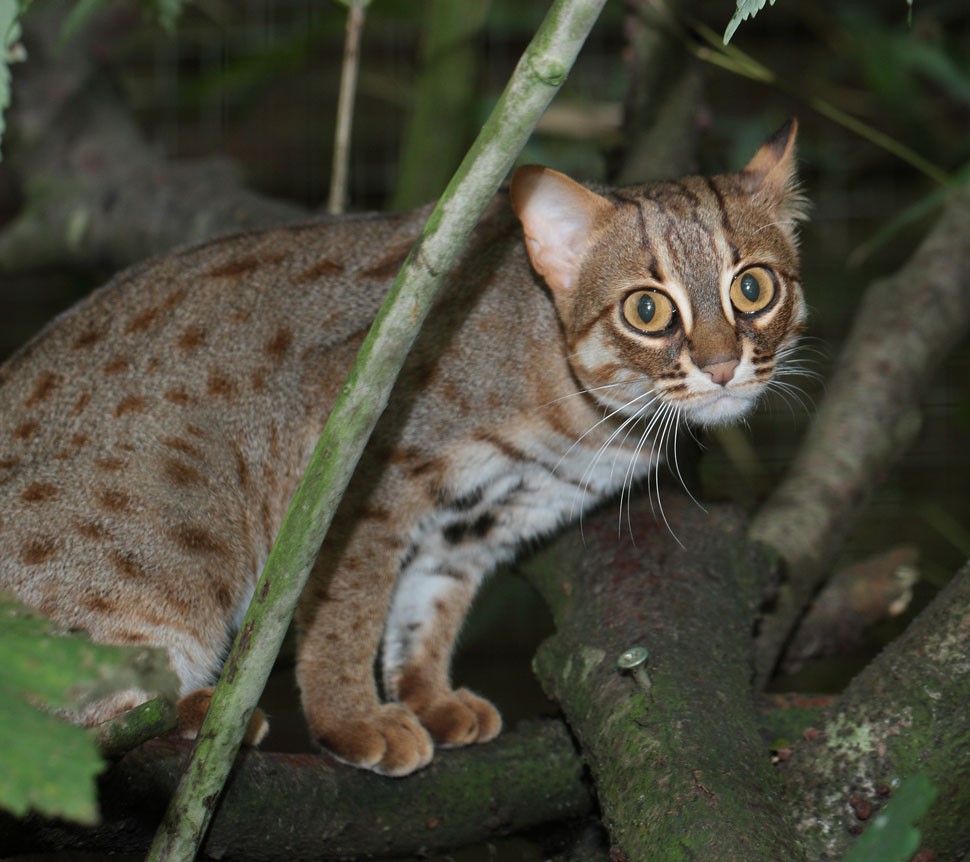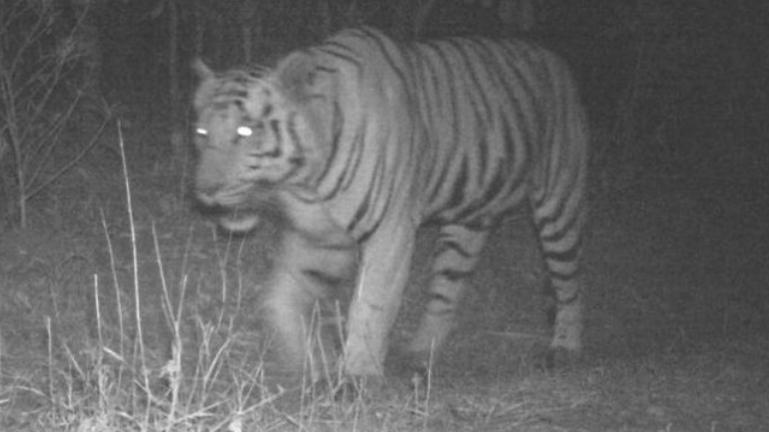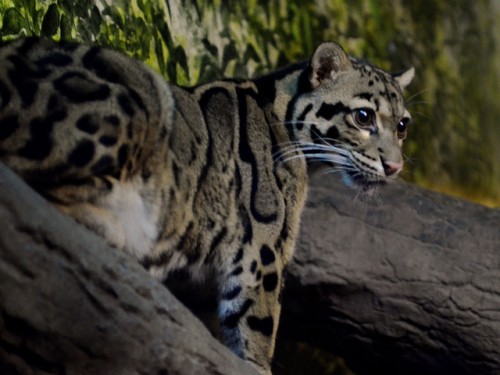The last time, the rusty-spotted cat was seen in Pilibhit Tiger Reserve was in 2011. It was recently spotted again by Director of the reserve, H Rajmohan on a usual patrolling in the park after nearly a decade.
“I rediscovered the elusive cat last week during a usual patrolling in the Mala range. This was first reported in 2011 by Akhtar Mian, a bird lover and naturalist in Haripur range and by World Wide Fund (WWF) during a routine camera trapping exercise. It has been spotted after a decade”, said Rajamohan to HT.
Also Read: World’s Smallest Cat Spotted in Sariska
The rusty-spotted cat is listed as Vulnerable in the Red List of Threatened Species. The presence of the cat is known from many forests across India. However, information related to the animal is limited because it is hard to spot and has a fragmented range mainly in three geographical regions in India. The cat is by nature nocturnal, making it even more difficult to observe.
According to the IUCN (International Union for Conservation of Nature), the prime habitat for this species occurs in three broad regions within the country, indicative of a fragmented population. These are,
-Western Ghats
-Easter-Central India
-The Himalayan Foothills
These prime regions correspond with dry and moist deciduous forests showing relatively low forest fragmentation. The IUCN warns that the cat’s habitat is mainly diminishing due to the spread of agricultural lands and urban development fragmenting continuous forest patches.
According to a 2015 study, with solar power projects on the rise, the Central Indian landscape within the range of the species are rapidly being converted for establishing solar plants as an alternative source of generating energy for the past few years. The IUCN estimates therefore that the cat’s population may reduce a further 20-25% in the next few years.
The presence of the cat in protected reserves such as the Pilibhit, therefore, ensures that the species remains safe from urban development pressures.
Director Rajmohan also spotted another rarely seen species in the park – the coral red kukri snake which was earlier spotted in Dudhwa Tiger reserve of the state in 2018. It is listed in schedule IV of the Wildlife Protection Act.
Also Read: Best Places to Find Tigers in India
The snake, like the cat, is also nocturnal and hardly seen because of its nature to remain underground surviving on earthworms and larvae.
Pilibhit Tiger Reserve forms a part of the Terai landscape in the upper Gangetic plains. The northern edge of the reserve lies along the Indo¬-Nepal border while the southern boundary is marked by the river Sharada and Khakra. Along with the Dudhwa tiger reserve, it forms a venerable biodiversity hub for animals ranging from the tiger, leopard, elephant, hyena and a number of other birds and aquatic species.
Featured image courtesy Exmoor Zoo









